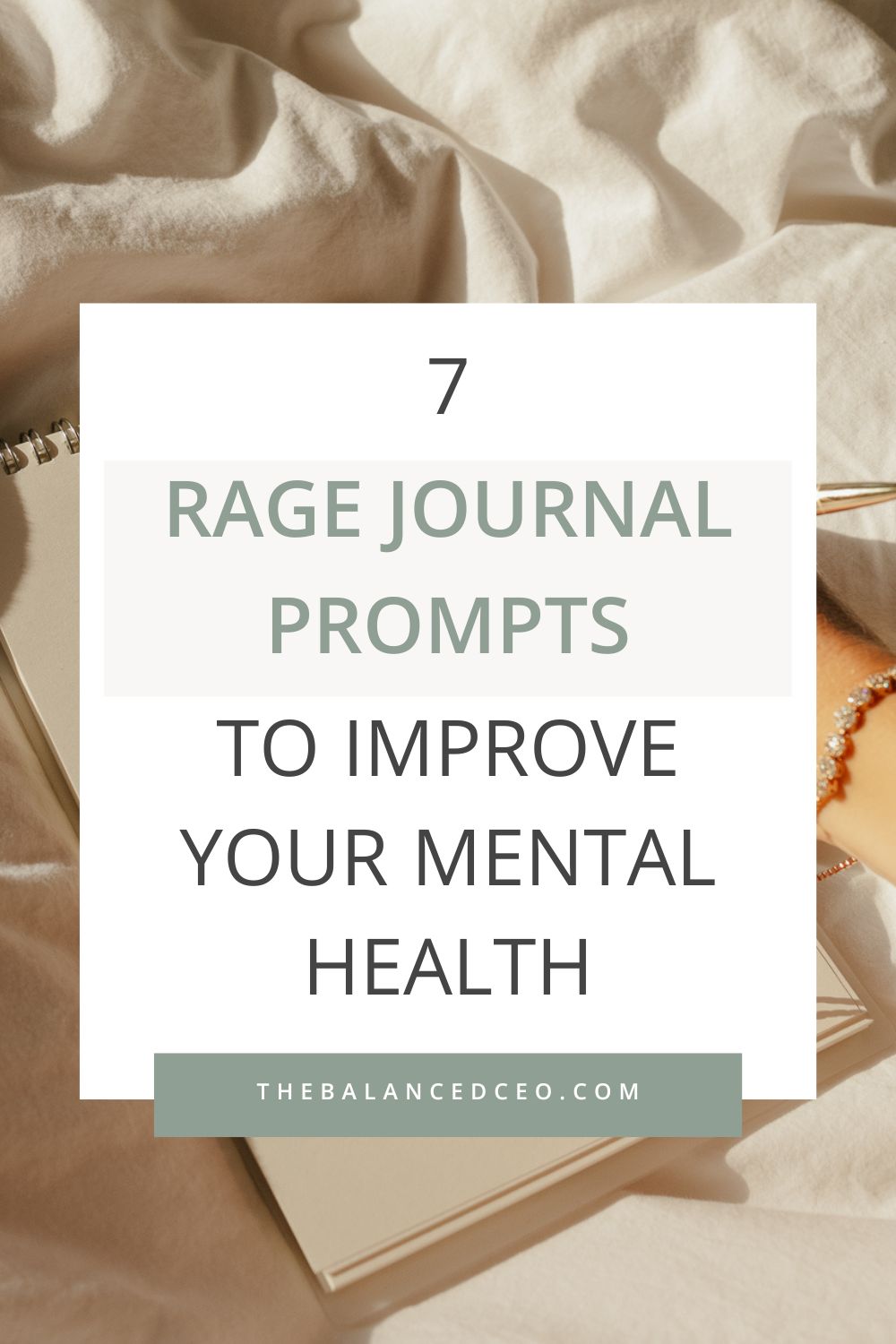This post may contain affiliate links, which means I’ll receive a commission if you purchase through my links, at no extra cost to you. Please read full disclosure for more information.

You might think feeling anger and frustration is wrong, but hiding away those emotions is not good for your health.
Keeping these feelings bottled up inside can increase your risk of depression. It can also cause physical strain, leading to cardiovascular problems and poor immunity. However, not controlling your anger can help you maintain relationships and navigate social situations healthily for you and others.
How do you control your anger while releasing it healthily? One method is rage journaling.
What is Rage Journaling?
Journaling is a proven technique for improving your mental health. Rage journaling focuses on channeling your anger into the words on each page. When angry, you can write down your thoughts and feelings to start moving past them.
Negative thoughts can put a damper on your day. By keeping a small notepad to write down the things that upset you, you can compartmentalize them to address when you’re in a safe environment for journaling.
Rage Journaling Prompts
These seven prompts can help you learn to rage journal if you’re unsure where to start.
1. When did you feel angry today and why? What did you learn from the experience?
Reflection is an excellent tool for getting your thoughts and emotions on paper. Talk about the events of the day and what made you feel angry.
This prompt is an excellent opportunity to vent about your day to your journal instead of someone who might take your complaining wrongfully. Talk about what you learned about yourself, another person, or a situation amid that anger.
You could write this as a letter to the person or thing that made you angry. Choose to keep it or rip it up when you complete it.
2. If your anger was a person, what would they look like? What do you need to tell them?
This prompt encourages you to use your imagination. By seeing your anger as a person, you can communicate with it and better accept it. Describe or draw what you imagine them to look like.
Write to them and discuss when they are most helpful. Explain why you don’t want them to come out in certain situations and the appropriate times to express themself. You can become a partner with your anger to help you stay healthy.
3. What are five things that make you angry and five things that make you calm?
Answering these questions allows you to release the anger you repressed before helping you calm down.
List things that recently angered you and write anything you feel around it. It could be something recent or long ago—pen anything you want about the situation without shame.
Then, list some things that make you feel calm and centered. It could be taking a walk, reading your favorite book or listening to your favorite music. List what about them you love to leave your prompt on a happy, relaxed note.
4. What commonly triggers your anger? How can you reframe those situations to feel less angry?
We all have triggers and what seems like no big deal to someone else could make you angry. Reflect on what made you angry recently, even if you are unsure why. Think through the situation and when those feelings started and escalated.
Reframing those situations can make them easier to cope with in the future. The problem might serve as an opportunity for you to educate someone or show them the compassion they might not otherwise receive.
5. What other tools can you keep with you to help you reduce your anger?
In your journal, talk about times you felt angry but couldn’t write. What other things make you happy and can help you calm down without it?
Your journal is an excellent tool to have on hand when you feel angry. However, not every situation lets you take out your pen and paper. When your anger overwhelms you, what can you have on hand to feel better until you have time to write out your emotions?
Stress balls, calming scents, and fidget toys are subtle ways to physically release some of your anger. Deep breathing techniques are also excellent skills to know. Write down what you want to try to give yourself assurance that you can handle your anger no matter what.
6. When’s the last time you reacted out of anger? Did it help or make the situation work?
You can learn from your anger. Think back to the last time you were angry. What feelings came up? How did you handle your emotions in that situation? Anger can be a sign of what we care about and we can channel it to make a positive change.
How did your anger help or hurt that situation? Are there changes you can make to approach the problem better?
7. When are you most angry with yourself? How can you forgive yourself today?
You might not just feel angry at others but at yourself. Making a mistake can cause others to feel sad or angry, which can make you feel guilty.
Write down that everyone makes mistakes and that they serve as learning opportunities. If you don’t have a chance to apologize to the person you were angry with, consider doing so in the journal. Pen a letter that can help you get those feelings out.
By writing down positive affirmations, you might believe them more. Look at them when you need reassurance.
Using Rage Journaling for Mental Health
Your mental health connects to your physical health. Holding onto anger can drain your ability to cope with future events. Rage journaling lets you release your anger in a healthy, productive way.

Ava Roman
Contributor
Ava Roman is a mom, a yogi, and currently a Managing Editor of a women’s lifestyle website. She believes work/life balance is achievable once you learn to set and stick to firm boundaries. You can find more from Ava on her website, Revivalist.





Leave a Reply